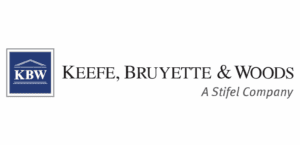How to Get the Best Price for Trading in Your Car

There are lots of reasons why you might want to trade in your old car for a brand-new vehicle. Maybe your family is expanding, you’re moving to a new city, or it’s just time for an upgrade. Whatever your reason, trading in your car can be a great option.
The trade-in process can dramatically cut down the work associated with selling a car, which includes advertising, arranging test drives, and negotiating with a buyer. With a trade-in, you simply bring your vehicle to a dealership and drive away with a different car. Plus, the money you get for the trade-in can be put towards the purchase of your next car.
While the trade-in option might not squeeze every penny of value from your current vehicle, it’s worth considering if you want to buy a new car. Here’s what you need to know about getting the best price for your trade-in.
What Is Your Trade-In Worth?
The first question to ask when considering a trade-in is, “what is the car worth?” An easy way to find out is to search online for cars similar to yours. You can consider the make, model, and year of the vehicle, as well as the number of miles and the condition. Make a list of similar used cars and their prices, then use the list as a point of comparison when determining your trade-in value.
Another option is to use an online tool to check the current retail value of your car based on car data from around the internet. Car and Driver offers a free car value calculator that you can check out here. You’ll simply enter information about your car, like the make, model, year, and mileage to get a price estimate.
Looking for an auto loan? Easily compare options to find a lender that works for you.
Your one-stop shop for comparing car loans.
Enter your information to see how much you can save on auto loans.
How to Get the Best Price for Your Trade-in
Here are some tips for getting the best price for your trade-in vehicle:
Get Multiple Offers
The phrase “shopping your vehicle around” refers to the process of taking it to several dealers to find out what trade-in values they’re willing to offer. The first offer you get isn’t necessarily going to be the best.
Consider visiting at least three car dealers to get different trade-in offers. Each time you visit, ask for a written record of their trade-in offer so you can easily keep track of your offers and prove your car’s value down the line.
Getting multiple offers is helpful for a few reasons. First, you learn where you can sell your car for the most money. It also helps when it comes time for negotiations. Even if the dealership that offers you the highest value for the car isn’t the one you want to do business with, you can use their offer to argue for a higher trade-in value at your dealer of choice.
Negotiate Your Trade-in Price
It’s important to remember that the first price a dealer throws out isn’t necessarily their final offer. It might surprise you how good of a deal a little negotiation can get you, especially if you do your homework. Before heading to the negotiation table, research your car’s value and understand all the contributing factors.
Negotiating your trade-in deal separately from your new car purchase may also be helpful. Many dealerships offer to make the process one quick transaction, but that makes it easier for dealers to hide fees and maximize their profit.
Time Your Car’s Trade-in Well
If you can wait to purchase a new car, it could help you get a better value for your trade-in. For example, if your current car is a convertible, you’ll probably get more value for it in the spring and summer months.
If your current vehicle is in high demand in your area, sell it as soon as possible to get the most money. You should also pay attention to the car market. When car prices increase, you can expect to get a higher trade-in value for your vehicle, especially if it’s well-maintained.
How to Improve Your Car’s Trade-in Value
There are several ways to maximize your car’s value before you trade it in. Here are some suggestions for improving the market value.
Get it Up to Maintenance
Before you trade in your vehicle, make sure it’s up to maintenance. While spending money on a vehicle you intend to trade in may feel counterintuitive, doing so can help increase your used car’s trade-in value. You should also gather your maintenance records and bring them to the dealership. This shows the dealer and prospective buyers how well the car was maintained over its lifetime and what maintenance was recently done.
Wash and Detail the Car
It’s a good idea to take your car to the car wash before you trade it in. If you don’t want to spend the money to have the car detailed, you should take your vehicle through a car wash, clean out trash from the inside, and vacuum out any crumbs that might have gathered over the years. Don’t forget to remove personal items from hidden areas, like trunk compartments and the center console.
Make Basic Repairs
If your car is showing signs of wear, making simple repairs can improve the trade-in value significantly. For example, if there are major dents, scratches, or paint chips on the car’s exterior, consider having them fixed.
If the windshield is cracked, repair the crack or have the glass replaced. Again, it might seem unnecessary to put money into a vehicle you’re about to get rid of, but it can benefit you financially in the long run.
FAQs
Do You Pay Taxes When You Trade in Your Vehicle?
When you trade in a car, most states charge sales tax on the difference between the old car’s value and the price of the new one. For example, if you trade in a car with a market value of $10,000 and you buy a new car that’s valued at $15,000, you’ll only have to pay sales tax on the $5,000 difference. If your old car is about the same market value as the new one, you may be able to avoid paying sales tax altogether.
Do You Get a Better Deal When You Trade in a Car?
It’s difficult to say whether you get a better deal when trading in your car rather than selling it. It depends on lots of specific factors. In general, selling a car will usually get you a better price, whereas trading in your car is likely to be an easier experience.
What Is the Typical Trade-In Value of a Car?
The typical trade-in value of a car depends on the make, model, year, and mileage. But even after factoring those elements into your calculation, typical trade-in values can vary dramatically based on the current auto market. Your best bet is to use an online calculator to determine what your trade-in vehicle is worth at the moment.
What Is Considered a Rough Trade-In?
A “rough trade-in” is an industry term for a vehicle with significant exterior or interior damage that an owner wants to trade in. This damage might require extensive repairs or restorations to get the car in working order. If your car is in poor condition, you probably won’t receive much money for it.
Is Trade-In Value Higher Than Selling Value?
In most situations, the trade-in value of your car is lower than the selling value. While you can usually get more money selling a car than trading it in, selling the car yourself is a big task. For some people, trading in their car is the better option if they can avoid the hassle of a private car sale.
Can I Trade in a Car with a Loan?
Yes, you can trade in a car that you’re still paying off. However, your loan payments won’t stop. You can either use the money from your trade-in to pay off the loan, or you can roll your remaining loan payments into a loan on a new car.
Finance & Insurance Editor
Elizabeth Rivelli is a freelance writer with more than three years of experience covering personal finance and insurance. She has extensive knowledge of various insurance lines, including car insurance and property insurance. Her byline has appeared in dozens of online finance publications, like The Balance, Investopedia, Reviews.com, Forbes, and Bankrate.


